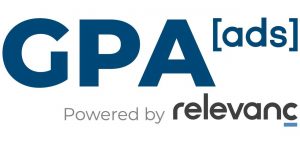The impact of Google’s decision notwithstanding, The General Data Protection Regulation (GDPR) and CCPA (California Consumer Privacy Act) are here to stay and the push for more privacy will continue. This means that advertisers need to embrace innovative approaches to maintain the effectiveness and monitor the impact of their campaigns.
Measurement is at the core of digital marketing. Showing a link between an ad served and the desired action, such as a purchase, is how marketers show ROI. For now, at least, third-party cookies – which allow customers to be tracked across different sites – are the enabler for both measuring the effectiveness of online advertising and the targeting of customers. However, upcoming changes will make both much more challenging.
Google has announced, although subsequently delayed twice, the end of support for third-party cookies in its Chrome browser by the end of 2024. At the time of writing, Google Chrome holds a 65% market share. The impact of Google’s decision notwithstanding, The General Data Protection Regulation (GDPR) and CCPA (California Consumer Privacy Act) are here to stay and the push for more privacy will continue. This means that advertisers need to embrace innovative approaches to maintain effectiveness and monitor the impact of their campaigns.
Thanks to a new partnership with Google and its Ads Data Hub (ADH), RelevanC has developed a solution to address these challenges. The relevanC solution enables the collection of advertising media indicators (such as impressions) and subsequent measurement of an advertising campaign’s sales performance without using third-party cookies.
Our solution matches the Google DSP identities with transactional data and produces relevant sales indicators. Furthermore, by linking ADH and first-party data, we are now able to reconcile online advertising with in-store sales data (first-party data). For example, by reconciling these two data sets, we can now say that 800 people saw an advertisement for Columbian Coffee on July 21, of which 200 went on to purchase the cheese the following week. With this level of information, we can provide relevant indicators to analyze the impact of an ad on sales.
The solution we have developed is highly scalable. It favors organizations that have a Google tech stack in place (ADH, Google DSPs, BigQuery as a data warehouse) partly because of its ubiquity but also because BigQuery’s native data structure is well suited to the hosting of first-party data.

By using only aggregated & anonymized data, Google ADH ensures that client privacy and GDPR regulations are respected. ADH allows us to pull in a variety of data sources, such as Display Video 360 (DV360) and Google Ads.
ADH prevents inspection of the underlying personally identifiable data. If a calculation submitted to ADH does not respect the privacy checks, the result will not be accessible. For example, at RelevanC we link our media data from DV360 to ADH. This data contains information such as who viewed an ad and when. So, through ADH we can see that 800 people viewed the sheep cheese ad on July 21, but we cannot identify the individuals involved.
relevanC’s solution marks an important step forward in campaign measurement and offers personalization in the near cookieless future. By providing retailers the ability to reconcile ad exposure with sales data as well as direct targeting of customers without the use of third-party cookies, relevanC is helping advertisers keep their Retail Media investments profitable. Importantly the privacy of the consumer remains protected. relevanC’s solution is currently used by clients in Europe, with deployments in Latin America coming soon.



